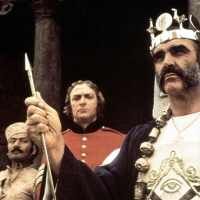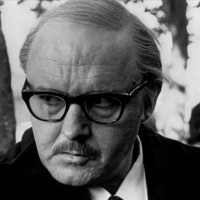Richard Chamberlain, David Gulpilil, Olivia Hamnett, Nandjiwarra Amagula
Directed by Peter Weir
Written by Weir, Tony Morphett and Petru Popescu
– – –
“Dream is a shadow . . . of something real.”
Directors helm the massive ship that is their film, in charge of traversing the undulating, meandering, and sometimes rough current that is its journey. Each one has their own call sign, their own signature, like Kubrick, or Lynch or Ford that come to represent them. Others have their perennial thematic strengths and their cinematic prolificity to speak for them, like Spielberg, Lean and Scorsese.
Long-time Aussie auteur Peter Weir traverses the rippling waters between both an illustrator of film with a cinematographer’s eye, and a bonafide blockbuster-maker. The torch-bearer of the Australian New Wave – born roughly with Nicholas Roeg’s Walkabout in 1971 and continuing up through the Ozploitative Crocodile Dundee (1986) – Weir cut his teeth in his hometown of Sydney, working at a local news station and eventually making some short films crafted after hours with company equipment that would lead him to stardom.
His immediate critical success in America came with the classic Harrison Ford-led Amish thriller Witness in 1985, with its ethereal synthesized score by Maurice Jarre and sweeping, golden Pennsylvania corn fields shot by longtime collaborator Russell Boyd that rival’s Néstor Almendros’ historic panoramas in Days of Heaven (1978).
Crowd-pleasing period prep school cheerer/weepie Dead Poets Society followed in 1989, which proved to be a real box-office darling, allowing Weir the ability to spread his talents into other genres throughout the 1990s. But after a five-year hiatus coming after 1998’s The Truman Show, Weir unleashed his take on Patrick O’Brian’s classic series onto screens with Master and Commander: The Far Side of the World, his best work since Witness and the most exciting and realistic seafaring warfare epic since fellow Aussie Roger Donaldson’s refreshing Mel Gibson-led reboot of The Bounty in 1984.
But in the wake of his quarter-century’s worth of success in America, it’s important to not forget his roots, steeped in Australian culture and the native Aboriginal mythos of the land down under’s otherwordly landscapes.
Only Weir’s second film, 1977’s The Last Wave is the most fantastical, the most bizarre of his entire repertoire. Beverly Hills-born Richard Chamberlain – an unofficially honorary Australian thanks to the success of The Thorn Birds in the early 1980s – is cast as David Burton, a Sydney attorney that is chosen rather oddly to defend a group of Sydney’s Aboriginals accused of murder.
But there is definitely more to the case that meets the eye, an inexplicable and unsettling occurrence proving this early on in the film when the dream-prone Burton envisions an Aboriginal man in a rain-drenched nightmare, only to see him in the flesh for the first time as one of his clients.
The weather, and in particular the pouring, sopping wetness of an unusually strong monsoon is often the most noticeable and powerful character in the film, and Weir uses it terrifyingly in the jarring opening sequence, when school students in the dusty climes of Western Australia watch cricket ball-sized hail and sloshing rain storm out of a clear blue sky.
The Last Wave makes sudden, briefly scripted and unbelievable connections to the weather, the intense Aboriginal Chris Lee, and Burton, who may or may not be descended from an ancient line of white-skinned otherworldly seers called mulkurul, who made their living ages ago predicting the apocalypse.
It’s Chris Lee’s character, played by the most famous Aboriginal actor of all time David Gulpilil, the last stop when a production company wants to cast a native Australian, that makes the prophetic visions that The Last Wave alludes to credible and believable. Raw and primal, Gulpilil is the antithesis of Chamberlain’s suited Anglo-Saxon everyman, and yet the two onscreen create a palpable back-and-forth chemistry that dignifies the craziness that they’re steeped in.
Burton, whose Reverend stepfather is his only remaining relation, learns that he as a boy had dreamed his mother’s death. It is revealed that she died in exactly the way he had envisioned. And when more nightmares come to him, some of them now more waking then dreaming, revealing the images of Sydney townsfolk drowning in a flooded street, Burton knows that something catastrophic is about to happen.
The film’s conclusion takes place in the uncharted depths of labyrinthine sewers underneath the city, where Burton discovers a nearly untouched Aboriginal shrine. On its walls is painted the prophetic images that Burton and the Aboriginals have spoken of: a lunar calendar leading up to the very end of life, the terrifying image of a mountains-tall tidal wave roaring towards Australia.
And in the shrine, alongside the decayed skeletons of former mulkurul, Burton picks up an Aboriginal death mask – an exact likeness – and rushes, driven insane, out of a storm drain and onto a beautiful Sydney beach, only to see the end rushing towards him.
There is much fantastical stuff that had to be implied, rather than told, in the film’s one hour forty-six minute length, but Weir and Boyd pulled out their bag of cinematic tricks for the job. Strange, disconcerting animal noises paired with blaring, throat-scratching didgeridoos are heard when composer Charles Wain’s emotive keyboard chords aren’t playing. Indelible shots of rainwater cascading down the top of a flight of stairs, tiny toads chirping in the sodden outdoors, a sudden burst of oil-dark rain onto Burton’s windshield, and a frightening image of a nude Aboriginal standing in silhouette outside Burton’s door.
There are films one observes, and films one experiences, like a thrill ride or even an opera. Weir’s collective movies, and The Last Wave at the forefront, occupy the latter’s territory.
A skilled auteur can take an unbelievable, even silly idea and strengthen it even without fiddling with the script. The camera work can be made to provide all the explanations necessary, and here Weir lets it do the talking.








You must be logged in to post a comment.